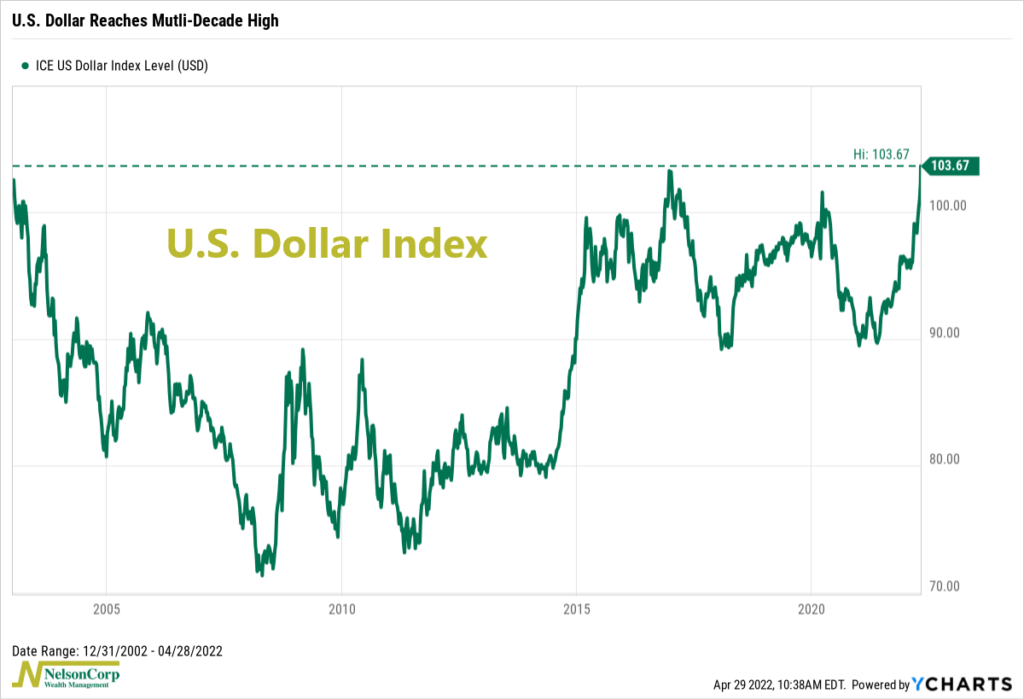
Listen closely, and you might hear chants of “King Dollar!” echoing faintly in the background.
Why? Because the stealthy story unfolding in the financial markets over this past month has been the surge in the value of the U.S. dollar.
As our chart of the week above shows, the ICE US Dollar Index—a measure of the value of the U.S. dollar relative to the other major world currencies—has climbed to a two-decade high. The last time the dollar was this strong was near the end of 2002.
So, what’s going on? Well, currencies are a zero-sum game, meaning when one currency strengthens, another one must weaken. And recently, we’ve seen the Japanese yen fall to a 20-year low against the dollar, while the euro has nearly reached parity—or a 1:1 value—with the dollar.
Much of this has to do with rising interest rates in the U.S., which attracts capital and strengthens the dollar. This is due to a combination of the Fed taking a hawkish stance towards inflation and growth prospects looking much stronger in the U.S. relative to the rest of the world—particularly the euro area, which is more heavily affected by the war in Ukraine.
The implications of a stronger dollar going forward are complicated. But, in general, it will help contain inflation, as imported goods are cheaper. But it could also hurt multinational companies, who must convert overseas revenue back into dollars. It might also lead to a weakening in commodity prices.
Whether the dollar can keep the throne remains to be seen. But for now, it appears the king is back.
This is intended for informational purposes only and should not be used as the primary basis for an investment decision. Consult an advisor for your personal situation.
Indices mentioned are unmanaged, do not incur fees, and cannot be invested into directly.
Past performance does not guarantee future results.
